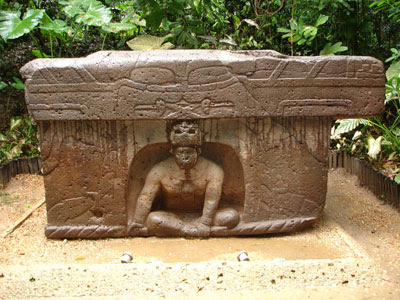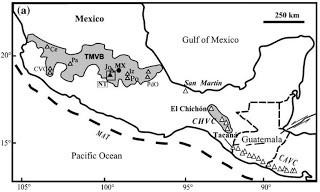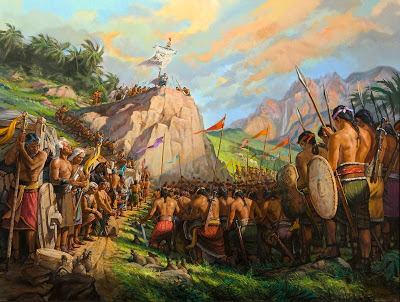The changing cost structure for LDS educators
And yet, most members of the Church, when presented with those two propositions, reject them out of hand. Up to now, the view of the Mesoamerican scholars has prevailed because they haven’t disclosed the two-Cumorahs theory and Letter VII (Seven).
The question is, why do LDS educators, by and large, continue to follow these LDS scholars?
It’s an example of the non-expert problem.
There are only a dozen or so self-styled “experts” on Book of Mormon geography issues. Some of them have PhDs in relevant subjects, such as archaeology or linguistics. They have reached a consensus about the two-Cumorahs theory. By their own standards, no one else is an “expert” in this field.
This means the rest of us cannot independently evaluate their claims. We can’t collect the data ourselves. We can’t visit the sites or read the Mayan glyphs. We can’t experiment. Even if we could, we’re busy with our own lives. We don’t have time to assess the credibility of these scholars, and anyway, they’re faithful LDS people so our default position is to trust them.
Non-experts generally trust what experts tell them. We don’t second-guess our doctors, lawyers, engineers, etc., especially when the majority of them tell us the same thing.
Educators are in nearly the same position the rest of us are. If they’re teaching in CES, their main focus is on spiritual lessons. They might have a little more time and interest to assess Book of Mormon geography than the rest of us do, but they also have more incentive to stick with the so-called consensus.
Most of these educators were either trained by the LDS scholars at a BYU campus. It’s natural for students to adopt the ideas of the professors they revere, particularly in a quasi-ecclesiastical setting.
Most of these educators have read the groupthink publications that promote the Mesoamerican setting (e.g., FARMS, BYU Studies, Maxwell Institute, Interpreter, Book of Mormon Central, BMAF, etc.).
The social/economic pressures are high for anyone who bucks the consensus. The Mesoamerican advocates have thoroughly infiltrated the culture, as I’ve shown in the discussions of Mesomania. Church artwork strongly implies official endorsement of the Mesoamerican theory. The illustrations in the Book of Mormon itself reinforce the two-Cumorahs theory. Today I pointed out another example on my Mesomania blog, here: http://mormonmesomania.blogspot.com/2016/12/mesomania-video-on-ldsorg.html
For an LDS educator, the cost of disagreeing with the Mesoamerican theory has been high, while there have been no penalties for agreeing.
It’s easy to see why LDS educators have gone along to get along.
But now that we are focusing on Letter VII (Seven) and the reality of the two-Cumorahs theory, the relative costs may be changing.
Now, adhering to a Mesoamerican theory means repudiating the prophets and apostles on the Cumorah question. As that realization dawns on more and more people, I think we’ll see a rapid change in the cost structure.
Let’s say you’re an LDS educator and a student asks you about Letter VII (Seven). Is your response going to be the same as the LDS scholars who continue to promote the Mesoamerican setting? Are you really going to tell your student that Joseph Smith and Oliver Cowdery were ignorant speculators who deceived the Church for over 100 years? That Joseph Fielding Smith was perpetrating a false tradition about Cumorah? That President Marion G. Romney misled the Saints during General Conference in 1975?
How far are you willing to go to salvage the Mesoamerican setting?
What if two students ask you?
What if the entire class asks you?
Are you really going to stand up in front of an entire seminary or Institute or BYU class and tell the students that Joseph Smith, Oliver Cowdery, and the others listed in the left column below were all wrong? And that only the LDS scholars are correct about Cumorah?
Are you going to show them this table and tell the students to believe only those in the right column?
|
People who perpetuate a false tradition about Cumorah being in New York
|
People who teach the truth about Cumorah not being in New York
|
|
Joseph Smith
|
LDS scholars who promote a Mesoamerican setting for the Book of Mormon
|
|
Oliver Cowdery
|
LDS scholars who promote a Baja Californian setting for the Book of Mormon
|
|
David Whitmer
|
LDS scholars who promote a Panamanian setting for the Book of Mormon
|
|
Lucy Mack Smith
|
LDS scholars who promote a Peruvian setting for the Book of Mormon
|
|
Brigham Young
|
LDS scholars who promote a Chilean setting for the Book of Mormon
|
|
John Taylor
|
|
|
Heber C. Kimball
|
|
|
Wilford Woodruff
|
|
|
Orson Pratt
|
|
|
Parley P. Pratt
|
|
|
Joseph F. Smith
|
|
|
Heber J. Grant
|
|
|
George Albert Smith
|
|
|
Joseph Fielding Smith
|
|
|
Marion G. Romney
|
|
|
Mark E. Peterson
|
|
If you’re an LDS educator and you’re still promoting the Mesoamerican theory, this column is what you are teaching, whether you realize it or not. You are repudiating the people in the left column so you can embrace the people in the right column.
Plus, you have to tell the students that the people in the right column disagree among themselves. They only agree that the prophets and apostles were wrong.
In my view, the repudiation of Joseph and Oliver and their successors is inexcusable. I think most Church members who are aware of the question agree. And I think that’s why the cost structure is changing, and eventually the Mesoamerican holdouts will be isolated to their corner of academia.
___________________
The irony of this is that the Mesoamerican scholars painted themselves into this corner. They could have remained faithful to what Joseph and Oliver and their successors taught about the New York Cumorah, but they made a choice, early on, to insist the New York Cumorah was inconsistent with their preferred Mesoamerican setting. Maybe some of them will rethink that choice and argue for a larger geography that accommodates the New York Cumorah.
I welcome that discussion.
Source: Book of Mormon Wars



















